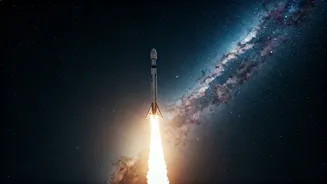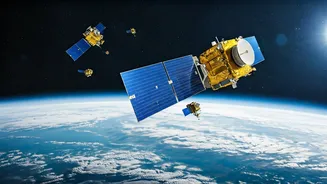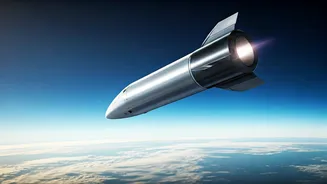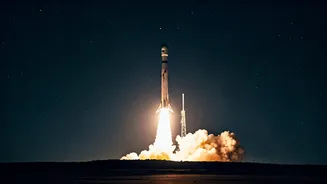SpaceX's Vision Unveiled
In 2025, Elon Musk announced SpaceX's audacious plan to manage 90% of the world's payload mass sent to space. This assertion suggests an unparalleled level
of dominance in the space transport market. The ramifications of such control could be extensive, affecting competition and innovation. SpaceX’s aim wasn’t just about putting things into orbit; it was about fundamentally altering the economics of space travel, thereby making it more accessible and, potentially, more profitable. This ambitious plan hinged on a confluence of factors, including the continued development of reusable rockets, increased launch frequency, and the acquisition of contracts from various organizations, from governments to private companies.
Industry Reactions and Impacts
The announcement by Musk also prompted a response from Google CEO Sundar Pichai, highlighting the competitive environment and the potential challenges or opportunities presented by SpaceX's goal. This demonstrates the high stakes involved in the space race. The impact of SpaceX’s dominance extends beyond mere market share. If achieved, this level of control would reshape industry standards, influence technological development, and have geopolitical consequences. The capability to launch a massive amount of payloads efficiently would also open doors for new projects and industries that depend on space. These could include advanced communications, earth observation, and even resource extraction, thereby positioning SpaceX at the center of the next generation of space exploration and utilization.
Technological Underpinnings Explored
Central to SpaceX's goal is its innovative rocket technology, most notably the Starship, which is designed to be fully reusable. The company’s success relies heavily on the constant enhancement and efficiency of these rockets. Reusability significantly reduces the cost of space travel. SpaceX has continuously worked on reducing costs while improving reliability. The development of advanced propulsion systems, efficient manufacturing processes, and optimized launch procedures are all key components. The 90% goal is not just about having the biggest rockets; it's about having the most dependable, cost-effective, and frequently used space transport system, which could fundamentally transform the landscape of space exploration.
Future Implications and Analysis
If SpaceX realizes its objective, this would consolidate its position as the leading player in the space transport market. This dominance has a variety of implications, including the potential for increased control over space infrastructure and the ability to influence policies regarding space exploration and usage. A dominant position also allows for greater financial resources and the possibility to fund additional exploration efforts. The long-term implications are far-reaching, from research and development to the way nations interact with one another in the space domain. Thus, SpaceX's 2025 goal is more than a business target; it is a sign of changes in the world of space exploration and its future trajectory.











